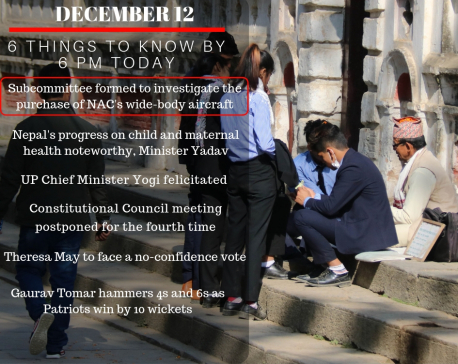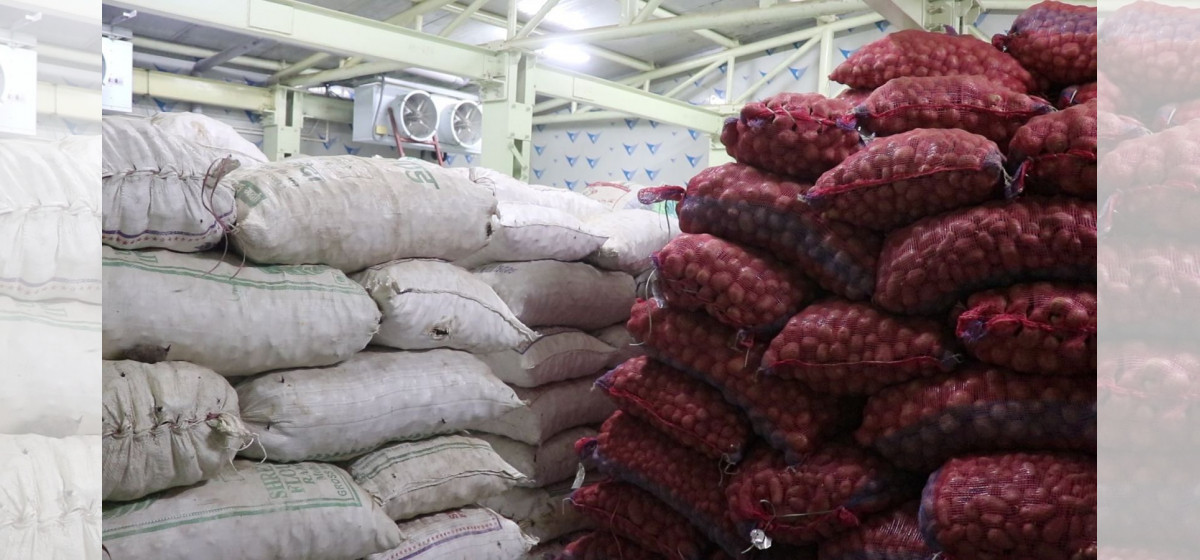
OR
Alarming stats: 34% of women in Nepal in anemia crisis, posing challenges to MDGs
Published On: September 14, 2023 08:00 PM NPT By: Republica | @RepublicaNepal

KATHMANDU, Sept 14: As much as 34 percent of women of reproductive age in Nepal have been found to be suffering from anemia. The problem of anemia among women in the age group of 14 to 49 is 34 percent as per the Nepal Demographic and Health Survey 2022.
Experts have pointed out that although it had decreased by seven percent compared to the figures of 2016, five years ago, it has not decreased at the expected rate. In 2016, this rate was 41 percent. In 2016, the problem of anemia among girls between the ages of 14 and 19 was 44 percent, and in 2022, this problem had reached 39 percent, a decline of just five percent.
The condition of having a lower quantity of red blood cells in the body, resulting in a reduced amount of red blood in the bloodstream, is referred to as anemia. This can occur when there is a deficiency in iron, vitamin B12, or other essential nutrients that are necessary for the production of red blood cells. Anemia can manifest in symptoms such as fatigue, pale skin, weakness, dizziness, and in severe cases, shortness of breath.
According to Hematologist of Civil Hospital Dr Bikram Karki, iron deficiency and vitamin B12 deficiency in Nepal seem to cause anemia. It seems that the lack of essential nutrients in the food available in the market now leads to the problem of anemia. Dr Karki says that if a person doesn’t eat fish and meat, there is more anemia.
Apart from this, hereditary blood diseases also cause anemia. Anemia also occurs if the vitamin cannot be absorbed due to intestinal infection. Jaundice can also be seen in such patients if the intestine ruptures and bleeds. According to Karki, if anemia is not treated in time, complex problems are likely to appear.
Dr Karki explains that having low blood volume, known as hypovolemia, can lead to various problems, including rapid heartbeat, forgetfulness, and difficulty walking. When there is a decrease in the amount of oxygen in the blood, it affects various parts of the body. This can have an impact on the heart, brain, muscles, and hands.
According to him, hypovolemia means there is a reduced amount of oxygen in the blood, and it can lead to inadequate blood supply to different parts of the body. This can affect the heart, brain, muscles, and hands. In some cases, it can even lead to a heart attack.
He emphasizes that the heart has to work harder when there is low blood volume, which can weaken the heart and make breathing difficult. Additionally, in some cases, fluid can accumulate in the abdomen, leading to further health issues.
Overall, low blood volume can cause a range of symptoms and affect various organs and body parts, making it important to address this issue promptly.
Anemia due to lack of nutrition
According to nutritionist Nanishova Shakya of the TU Teaching Hospital in Maharajgunj, even a slight deficiency in nutrition can lead to anemia in Nepal. In women, low levels of iron and vitamin B12 are commonly associated with anemia, especially during pregnancy or lactation.
Shakya explains that in Nepal, factors such as inadequate nutrition, lack of balanced meals, and skipping meals contribute to persistent anemia, particularly in women and adolescents who tend to have low body weight.
Leela Bikram Thapa, chief of the Nutrition Section at the Family Welfare Division, emphasizes that even though the government has implemented programs to distribute iron supplements for pregnant, lactating, and adolescent girls, the problem of anemia persists due to inadequate consumption.
He also points out that the goal set by the government to reduce anemia by 10% until 2030 may face challenges due to pollution and insufficient balanced diets, especially in the Terai region.
Eating these foods prevents anemia
Nutritionist Shakya suggests that consuming a diet rich in vegetables, fish, fruits, and vitamin B12 can help increase the level of red blood cells in the body. Plant-based and animal-based foods serve as good sources of vitamins, including B12.
It is recommended to consume at least 10 grams of fruits and vegetables daily. Green leafy vegetables like spinach, mustard greens, fenugreek, and sesame seeds are rich in essential nutrients.
Additionally, foods like egg whites, chicken liver, and jaggery (unrefined sugar) should also be included in the diet. Fruits like guava, orange, Indian gooseberry, and emblic myrobalan (amla) are beneficial as they are rich in vitamin C, which aids in iron absorption.
Regular balanced meals are crucial, as they not only provide essential nutrients but also naturally help combat anemia. In cases where anemia is due to genetic factors, taking prescribed medication regularly, addressing digestive issues, and seeking treatment from a relevant specialist can help manage anemia.
You May Like This

Minister Pokharel highlights Nepal's progress on gender parity in basic education in New York
KATHMANDU, July 17: Minister for Education, Science and Technology Giriraj Mani Pokharel on Tuesday highlighted the progress Nepal made on... Read More...

Dec 12: Six things to know by 6 PM today
Your daily dose of missed important news of the day ... Read More...
Just In
- NEA schedules five-day power cut across Kathmandu Valley for underground cable installation
- Hundreds of passengers including foreign tourists in distress as poor visibility halts flights to and from PRIA
- Nepal clinches thrilling victory over West Indies 'A' in T20 cricket match
- Capital Market Struggle Committee stages protest demanding protection of domestic investors (Photo Feature)
- Captain Paudel scores half-century in T20 match against West Indies 'A'
- Nine youths from Tanahu allegedly joining Russian army out of family contact for months
- West Indies 'A' sets Nepal a target of 205 runs
- Parliamentary committee directs govt to provide electricity tariff subsidies to cold storage facilities












-1200x560-wm_20240427144118.jpg)





Leave A Comment